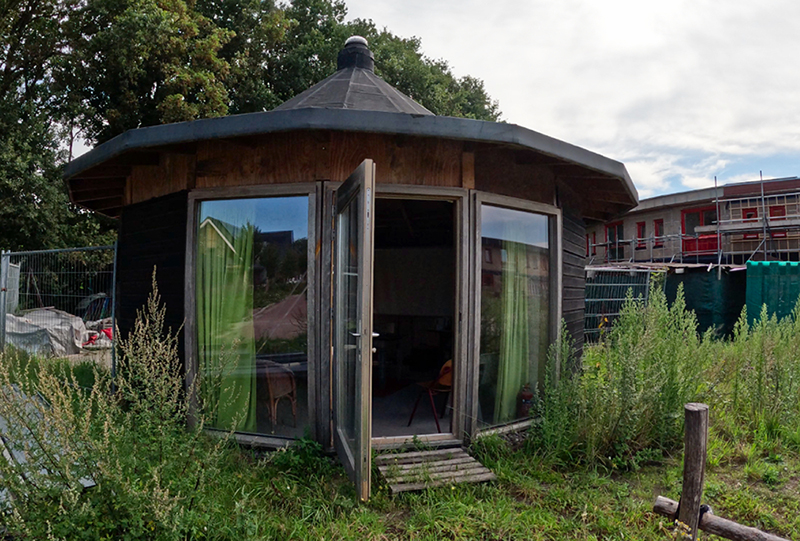Building Scalable Biodiversity Technologies Together with a Living Lab Community
July 8, 2025

This building displayed the installation of Digital Kins: A Digital Data Portal; inside, each of the data points could be rearranged and hung from the circular roof structure of the building through 4 m long cotton ropes.
As innovations in biodiversity technologies continue to advance and evolve, more valuable data on the natural world is being collected. While these technological advances present opportunities to better understand, monitor, protect, and restore biodiversity, they also open up new questions about how the data is being used and how it impacts local communities. MCSC Impact Fellow Michelle Westerlaken explores the many threads of these complex questions and concerns, in the context of a local restoration project, in a new article published in Computer Supported Cooperative Work (CSCW), a leading journal in the field of Participatory Design. The article, entitled Designing Biodiversity Systems via Digital Kinships: Insights from Community Data Processes and Creative Practice, highlights the relationship between emerging technologies, such as biodiversity simulations and digital twins, and the local users in the communities who might be impacted by them – with a biodiversity restoration project in the Netherlands. The research generates design recommendations through community-based methods that are valuable for developers who are designing biodiversity technologies on a larger scale.
“Our work brings emerging biodiversity data practices directly in conversation with ongoing technological innovations, and makes way for more societally engaged and concrete approaches to using digital systems to engage in biodiversity restoration,” explained Michelle.
Key findings surround four themes: designing for environmental storytelling, designing for prediction and future-making, designing for dynamic response, and designing for simulation aesthetics. These design recommendations have meaningful applications for industry as they explore their own nature-based solutions to climate change. They focus on how biodiversity technologies can facilitate meaningful connections, prompt further inquiry through supporting “what if” explorations, prioritize transparency and create awareness of their role in shaping restoration practices, and create more resonant digital experiences for those involved.
With these guidelines in mind, a technology developer can thoughtfully design biodiversity technologies that garner the data they strive for, while also resonating with the community they serve.

"The goal of this work is to take a community-centered approach and use our findings to shape design recommendations and technical features so that new biodiversity technologies can resonate with biodiversity restoration efforts.”
“This work is important and increasingly relevant because the design and development of new global biodiversity monitoring and simulation technologies is fast-paced and tends to prioritize technological innovation and quantitative data collection, rather than focusing on the complex relationship that restoration communities have with the biodiversity data,” said Michelle. “The goal of this work is to take a community-centered approach and use our findings to shape design recommendations and technical features so that new biodiversity technologies can resonate with biodiversity restoration efforts.”
The fieldwork, led by Michelle during her time as a Postdoctoral Research Associate at the University of Cambridge, was conducted with a living lab ecovillage community at Ecodorp Boekel. From the six months of research at this site, Michelle and the community designed a digital and physical data portal to simulate ongoing technoscientific innovation and make their complex effects available to users – involving the community members directly in the work as it unfolded. The portal underscores how local data practices can inspire designs that promote flexible and mutually-beneficial connections between communities and biodiversity data.
Explore the full summary of the findings in the open access article.
